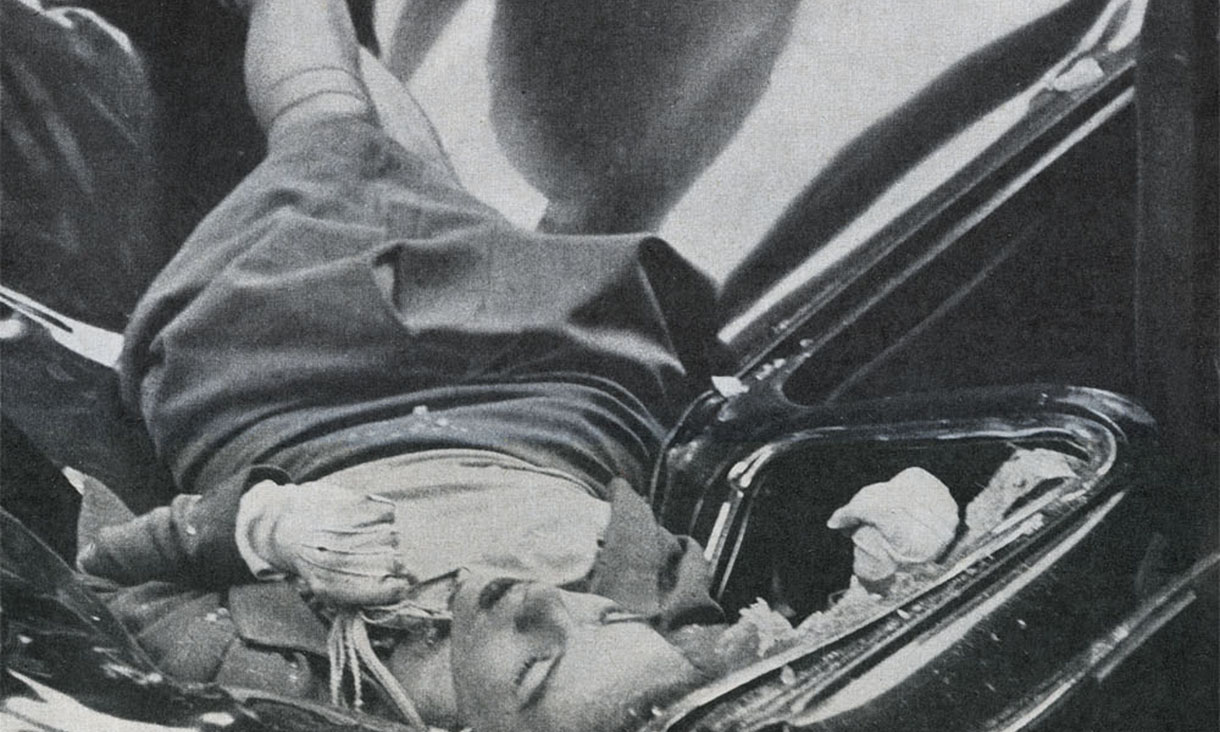Evelyn McHale
Photojournalism as Iconography
Shortly before 10:30 am, May 1st, 1947, 23 year-old Evelyn McHale bought a ticket to the 86th floor observation deck of the Empire State Building. Ten minutes later patrolman John Morrissey, who was directing traffic below, noticed a white scarf floating down from the upper floors of the building then heard a crash. Evelyn had stepped out on the parapet, jumped, cleared the setbacks and landed on the roof of a United Nations limousine parked on 34th Street, some 200 hundred feet west of Fifth Avenue. Robert Wiles, a sometime cabbie and “photography student” saw the commotion and rushed across the street where, standing on the sidewalk only a few feet from the car, he took his iconic photo of Evelyn just four minutes after her death.
Still clutching her pearl necklace with her gloved hand, Evelyn looks disarmingly placid and composed—as if she was simply asleep. Around her, however, the broken glass and crumpled sheet metal of a car roof shows how brutally destructive her 1040-foot jump was. Wiles, perhaps inadvertently, managed to capture in a single photograph both grace and beauty as well as and horror and death. The image remains as haunting and affecting as it did some 60 years ago.
Wiles’ photo was first published as the “Picture of the Week” in the May 12th, 1947 issue of Life Magazine. It was reprinted in a number of photography annuals and several Best of Life anthologies and eventually transcended reportage to became a pop culture icon. Evelyn’s photo was the inspiration for everything from Andy Warhol silkscreens to fashion layouts to album covers to Taylor Swift videos.
Of course Evelyn never intended to become an icon (in fact the very idea would have likely horrified her), she was simply a young woman who committed suicide. The internet is rife with speculation on her life and death, but what do we actually know about this girl? Who really was Evelyn?
I.
Evelyn Francis McHale was born on September 20th, 1923 in Berkeley, California. She was the sixth of seven children of Vincent and Helen (Smith, then briefly Patterson) McHale. Vincent was a banker and in 1930 he accepted a position as a bond examiner for the Federal Farm Loan Board and moved the family to Washington, D.C. Later he accepted a job in New York City and moved the family to Tuckahoe, New York where Evelyn attended Eastchester High School. As a junior, she told Le Souvenir, the school's yearbook, that her favorite movie was The Girl of the Golden West.
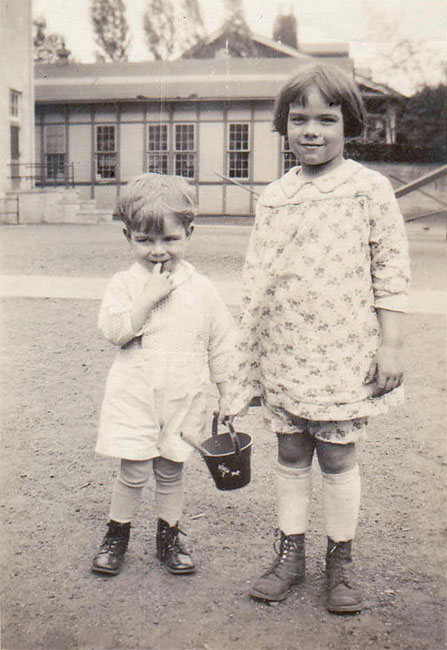
If the constant relocations weren’t difficult enough for a teenager, Evelyn also endured an unstable family life. Her mother apparently suffered from depression—an illness that was likely not diagnosed, let alone treated in the 1930s. This led to troubles with the marriage and by 1940 Vincent had left the family and moved to St. Louis where he became a stock broker. The couple divorced and Vincent was awarded custody of the minor children. Helen returned to California and Evelyn rejoined her father in St. Louis where she attended Normandy High School during her senior year. According to the Saga, the school’s yearbook, Evelyn “[was] certainly quiet at times, but she [could] hold an intelligent conversation about practically any subject.”

After she graduated, Ebby, as she was known in the family, joined the Women’s Army Corps, where “office machine operator” was listed as her occupation. She spent the war at the Jefferson Barracks, near St. Louis. Apparently military service didn’t agree with her; it was reported that after her service she burned her uniform.
In late 1944 she moved in with her brother and sister-in-law in Baldwin, Long Island and took a job as a bookkeeper with an engraving company in lower Manhattan. During a New Year’s Eve party in 1945 where she was celebrating her discharge she met another Baldwin resident, Barry Rhodes, an ex-Army navigator who was studying engineering under the G.I. Bill at Lafayette College in Easton, Pennsylvania. They dated, became engaged and planned a June, 1947 wedding at Barry’s brothers home in Troy, New York.
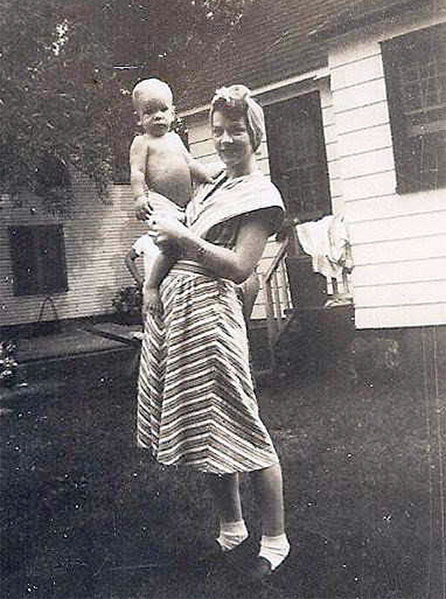
But things were not entirely as they seemed. Evelyn had inherited her mother’s depression. In the summer of 1946 Perry, Barry’s brother, married and Evelyn was a bridesmaid. After the wedding she tore off her dress and said “I never want to see this again.” Barry later told reporters that “She [worried] for some silly reason because she was afraid she was not good enough to be my wife. I thought I talked her out of that silly notion.”
II.
On April 30th, 1947, Evelyn visited Barry in Easton, presumably to celebrate his 24th birthday. “She often voiced fears of not being a good wife,” Barry told reporters, “[but] when I kissed her goodbye she was happy and as normal as any girl about to be married.” Evelyn boarded the train back to New York at seven am, May 1st. “I don't know what her last words to me were, she had to run for the train,” he said.
Evelyn arrived at Penn Station around nine in the morning then went across the street to the Governor Clinton Hotel where she wrote a suicide note on their stationary. She then walked two blocks east where, shortly before 10:30 am, she bought her ticket to observation deck of the Empire State Building.

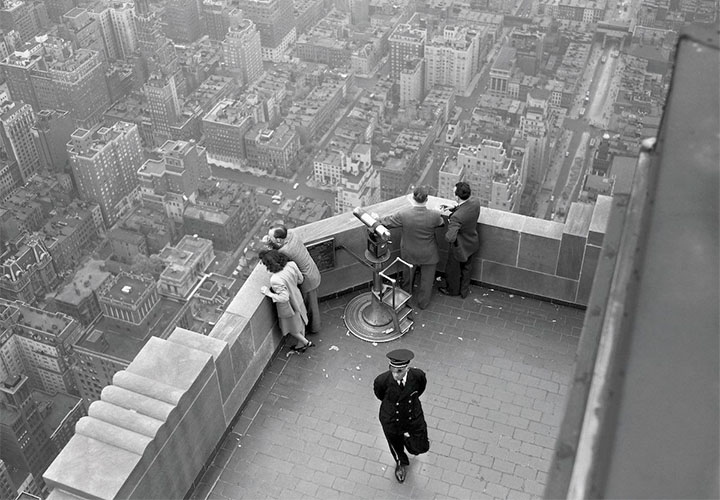
After Evelyn jumped and landed on the roof of the Cadillac parked on 34th street, crowds began to assemble around the scene. As the Brooklyn Daily Eagle reported, “Forenoon shoppers on Fifth Avenue were horrified.” It was then that Robert Wiles rushed across the street to take his photo. Although Wiles’ photograph is the one best remembered, several other photographs taken from the Empire State Building or the building across the street also made their way to the wire services:
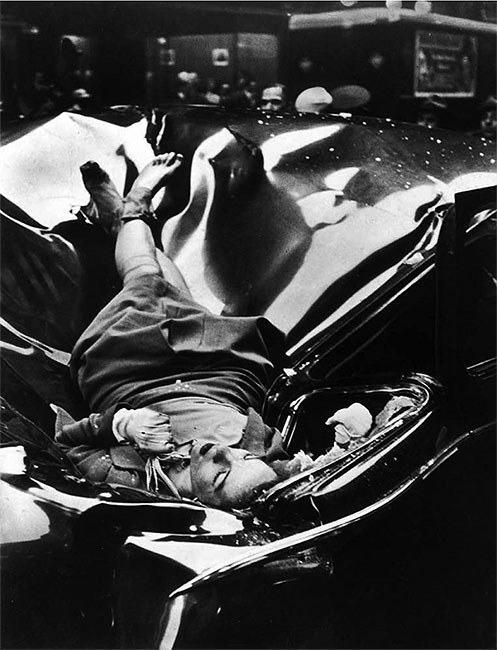
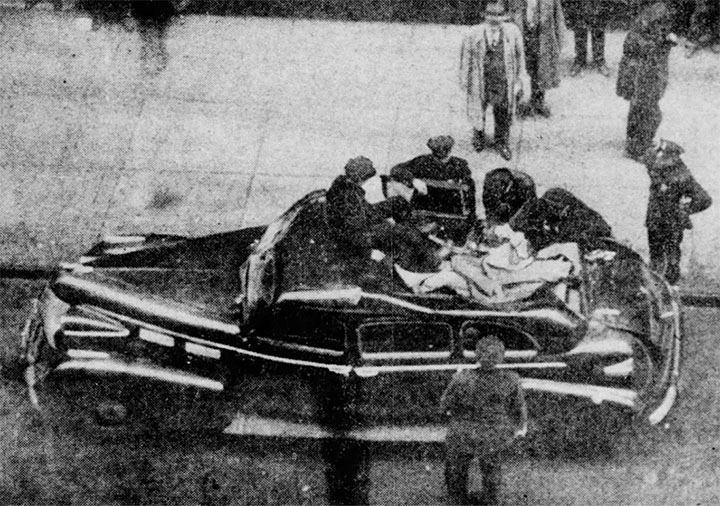
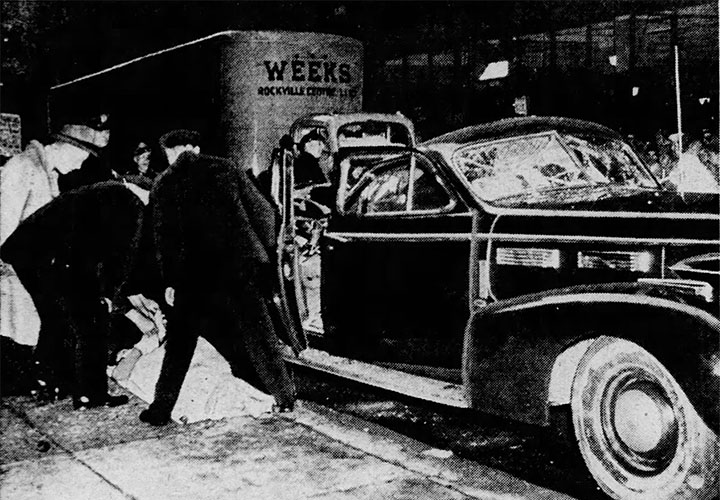

Later detective Frank Murray found her tan (or maybe gray—reports differ) cloth coat neatly folded over the observation deck wall, a brown make-up kit filled with family pictures and a black pocketbook with her suicide note which read:
“I don’t want anyone in or out of my family to see any part of me. Could you destroy my body by cremation? I beg of you and my family—don’t have any service for me or remembrance for me.
My fiance asked me to marry him in June.I don’t think I would make a good wife for anybody.He is much better off without me.Tell my father, I have too many of my mother’s tendencies.”
Her body was identified by her sister Helen Brenner and, according to her wishes, she was cremated. There is no grave.
III.
Construction of the Empire State building began in the spring of 1930 and even before its completion the first person had jumped to their death. The building, like the Golden Gate Bridge—built seven years later—became a magnet for those contemplating suicide. Evelyn was the 12th person to jump from the building and the sixth to clear all of the setbacks. She was one of five people in a three week period to attempt suicide from the observation deck. In response a 10-foot wire mesh fence was installed and guards were trained to spot potential jumpers. Unfortunately, after the barrier was completed people just jumped from other parts of the building, usually from office windows.
Barry became an engineer and eventually moved south. He died in Melbourne, Florida on October 9th, 2007 at the age of 86. He never married.
Robert Wiles never published another photograph.
—October 8th, 2009. Updated July 28th, 2017. Photography
